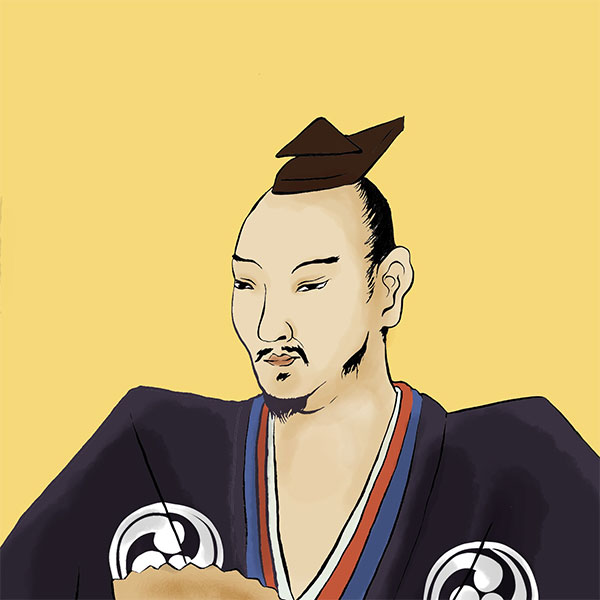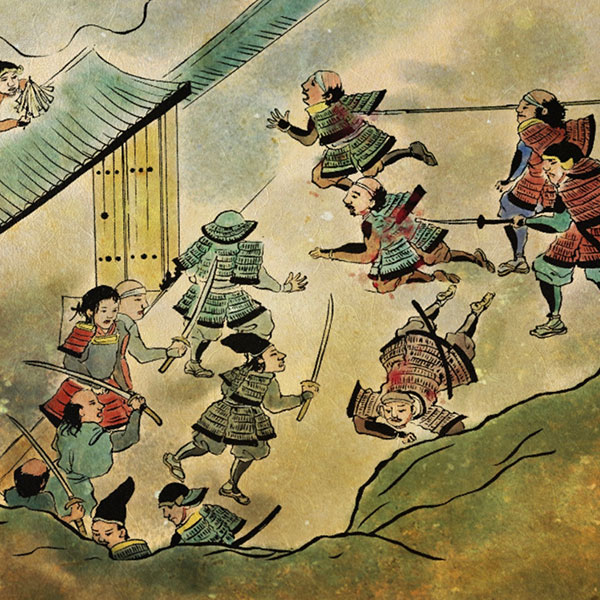Nagaharu Bessho (2/2)Brave general of Harima country

Nagaharu Bessho
- Article category
- biography
- name
- Nagaharu Bessho (1558-1580)
- place of birth
- Hyogo prefecture
- Related castles, temples and shrines
- related incident
Nagaharu Bessho and his family committed suicide upon surrendering Miki Castle, but not all of his family died. Among the family members, Nagaharu's uncle (Yasuharu Bessho's younger brother) Shigemune Bessho belonged to the Oda family, so he became a vassal of Hideyoshi Hashiba and became the lord of Yagi Castle in Tajima Province (or the lord of Sonobe Castle in Tanba Province). In the Edo period, Yoshiharu Bessho, the son of Shigemune Bessho, failed to comply with the sankin rotation of the Edo shogunate, and in 1628 he was relegated to the Yagi domain. There is also a theory that this amended Yoshiharu Bessho was actually the son of Nagaharu Bessho. Both Usagi and Kaku were part of the Bessho family, but they were later forgiven by the shogunate and continued as the hatamoto of the Tokugawa family.
It is also said that Choji had an 8-year-old child named Chiyomaru, who was taken away by his vassal Goto Motokuni (Goto Matabee's father) and later returned to farming.
The head family of Bessho Nagaharu disappeared, but the others continued until the Meiji era.
Miki Castle and Bessho Nagaharu Statue
Miki Castle is a Hirayama castle located in Miki, Mishuku District, Harima Province. It was called one of the ``Three Great Castles of Harima,'' along with the Kodera clan's Gokuri Castle and the Miki clan's Eiga Castle.
Although it is not certain when Miki Castle was built, it is believed that it was built by Noriharu Bessho around 1492. Noriharu Bessho's origins are unclear and he suddenly appears in history, but he served the Bessho family and achieved military exploits, expanding his power.
Now, in 1578 during the reign of Nagaharu Bessho, the Bessho family, which belonged to the Oda family, suddenly took an anti-Oda stance. It is said that this was because Hideyoshi Hashiba and Yoshichika Bessho had a meeting (according to Kakogawa Hyōsei) and their opinions conflicted, or that he had been entangled with Terumoto Mori even before that. Thus began the Battle of Miki, and Nagaharu Bessho committed suicide. After this, Miki Castle was managed as a territory under the direct control of the Toyotomi family (Hashiba family) and later became one of the branch castles of Terumasa Ikeda, who became the feudal lord of Harima province. However, in 1615, the Edo Shogunate issued the One Country, One Castle Order, and Miki Castle was destroyed.
Currently, the area around Miki Castle's main enclosure remains as Kaminomaru Park. Inside the park, there is a stone monument of Nagaharu's poems, the ``Kankan Ido,'' which is said to be a loophole to the outside, and a bronze statue of Nagaharu Bessho that was built by volunteers in recent years.
Bessho Koushun Festival
Bessho Nagaharu wins the life of his vassal in exchange for his own life at Miki Castle.
Currently, in Miki City, Hyogo Prefecture, the Bessho Koushun Festival is held on May 5th, Children's Day, in memory of Nagaharu Bessho, at Uenomaru Park and the Central Community Center, where Miki Castle was located.
In the morning, the main traditional event is the Poetry Festival. The public is soliciting poems in memory of Nagaharu Bessho and his family, and the best poems are recited at the ``Utahi Festival'' in front of the poem monument in Uenomaru Park (the monument containing poems written by Nagaharu Bessho during his time).
In addition, there will be fairs, warrior parades, dedicated martial arts tournaments such as judo, karate, kendo, and archery organized by athletic groups, and exhibitions of works by cultural groups such as bonsai, suiseki, and senryu, and enjoy the day while remembering local heroes. Masu.
Bessho Koshozuki death anniversary memorial service and Miki battle picture scroll
- Head mound at Unryuji Temple in Miki City and ``Bessho Koshogetsu Death Anniversary Memorial''
- Unryuji Temple in Miki clan has the head mound of Nagaharu Bessho.
Unryu-ji Temple is said to have been founded in the second year of Tentoku (958) by the priest Jie. It prospered under the patronage of the Akamatsu clan and the Bessho clan, the feudal lords of Harima Province. Then, when Hideyoshi Hashiba invaded Harima and the Battle of Miki occurred, the temple grounds and other buildings were burned down. After that, Hideyoshi handed over 30 koku of temple territory and a stamp of relief, which continues to this day.
Now, when Miki Castle falls, Nagaharu Bessho gives him his favorite Kintenmoku teacup. The temple mourned the death of Nagaharu Bessho, who committed suicide, and buried his body within the temple grounds. This is the origin of Choji's neck mound.
And now. The people of Miki (Miki District Mayor's Council, Bessho Kohosankai) have proposed that the Bessho Koshogetsu Death Anniversary Memorial Service be held on January 17th, the anniversary of Nagaharu Bessho's death. On the day of this memorial service, a traditional event is held in which people eat udon noodles shaped like straw to remember that Miki Castle survived the siege by eating straw. - Miki City Hokaiji Graveyard and Miki Battle Picture Scroll
- Hokaiji Temple in Miki City is said to have been founded by Gyoki Bodhisattva in the 4th year of Tenpyo (732). It is said to be the family temple of the Bessho clan, and Nagaharu Bessho is said to have committed suicide at this temple. In the main hall, there are memorial tablets, images, and wooden statues of Nagaharu Bessho and his wife, and outside Nagaharu Bessho's grave and the graves of his vassals are lined up.
On April 17th, the anniversary of Nagaharu Bessho's death, a memorial service will be held at Hokai-ji Temple and an explanation of the Battle of Miki will be held using a picture scroll of the Battle of Miki. You can listen to an overview of the Battle of Miki using a large hanging scroll depicting the Battle of Miki.
Reread Nagaharu Bessho's article
- related incident

- WriterTomoyo Hazuki(Writer)I have loved history and geography since my student days, and have enjoyed visiting historical sites, temples and shrines, and researching ancient documents. He is especially strong in medieval Japanese history and European history in world history, and has read a wide range of things, including primary sources and historical entertainment novels. There are so many favorite military commanders and castles that I can't name them, but I especially like Hisashi Matsunaga and Mitsuhide Akechi, and when it comes to castles, I like Hikone Castle and Fushimi Castle. Once you start talking about the lives of warlords and the history of castles, there's a side of you that can't stop talking about them.



